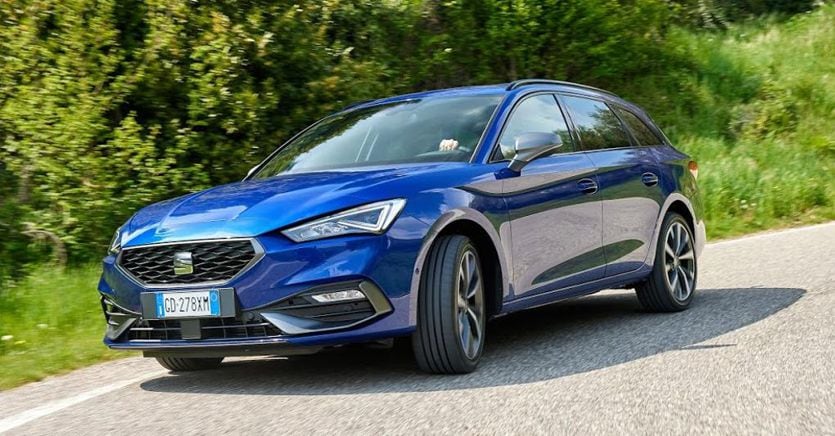With the advent of the natural gas TGI variant, the Seat Leon expands the family in a unique way in the compact sector. In fact, this interpretation joins those with petrol and turbodiesel engines as well as those with mild-hybrid and hybrid on tap. Furthermore, the Tgi contributes to the articulation of the Leon range also by the fact that it is offered in both the sedan and the Sportstourer family versions.
Seat Leon 1.5 Tgi, gassed but does not show it
Externally, the TGI is recognizable from the other Leon only by the writing on the tail as the gas filler neck is placed in the same compartment as the petrol one. In the passenger compartment, only the methane tank level indicators and the related instantaneous consumption stand out, inserted in the 10.25 ”digital instrumentation that can be configured in different ways, which is standard for all configurations. The pleasant presentation of the interior, rather spacious even at the rear, is determined by both the perceptible quality and the minimalist design of the furniture. The latter retires many physical buttons, entrusting the management of many car services to the central touch display of the infotainment, with diagonals of 8 “or 10” inches depending on the specification. The system, which also integrates the wireless connection for all devices starting from the intermediate set-up, can also be managed gesturally and vocally by saying Hola Hola, the AI also recognizes the passenger who called it into question by arriving, for example, to set the required temperature only on its side. In the end, the methane fueling is only reflected in the Leon sedan functionality we tested, as it reduces the boot capacity from 380 to 300 liters.
Loading…
Seat Leon 1.5 Tgi, native to methane
The downsizing of the boot is due to the presence of methane cylinders under the floor. In total there are three and two of them are right under the support surface, while the third is under the rear sofa. And again: two of them are made of composite materials, while one is in high-strength steel. They contain a total of 17.3 kg of methane and guarantee, according to Seat, a gas range of 440 kilometers, while the 9-liter petrol tank extends the Leon Tgi’s operating range to 600 kilometers. In fact, the fuel comes into play automatically only when the gas is exhausted, it only aims to allow you to reach the nearest refueling point. The Leon Tgi’s engine is a 1.5-liter supercharged Miller-cycle unit, which develops 130 horsepower and 200 Nm of torque consistently between 1,400 and 4,000 rpm, defined to run primarily on gas. In short, it can be said to be native to gas.
Seat Leon 1.5 Tgi, perky and pleasant
In the sporty Fr set-up this Leon always drives pleasantly both for its agile, precise and safe behavior and for the perky temperament of the engine which, obviously, emerges more when using the Sport car configuration. In any case, this unit, which thanks to supercharging acquires verve by contrasting the basic characteristics of the Miller cycle intended to optimize efficiency above all, ensures pleasant driveability also thanks to the fluidity of delivery impressed in this case also by the combination with the gearbox. seven-speed double clutch and because, starting from the intermediate revs, it unleashes a character that passes from spirited to lively. Moreover, without penalizing the good general comfort offered by the Leon. In terms of performance, it pushes the 1.5 Tgi up to 203 per hour, allowing it to reach 100 per hour in 9 “6, against a consumption, which the monovalent approval of the car, indicates 6.6 m3 of methane per 100 kilometers and CO2 emissions of 112 g / km.
Seat Leon 1.5 Tgi, let’s do the math
Projecting the homologation data of consumption in those of the real world in which methane is sold in kg, it means that a full tank costs less than 17 euros and that to cover 100 kilometers this Leon absorbs 4.6 kg of gas. Multiplying this value by the cost of sale, on average € 0.97 per kg, means that you spend € 4.6. In addition to the low cost that reduces the kilometer cost, methane also offers free circulation in the days of traffic blocking in many parts of Italy, the reduction of the ownership tax and the exemption from the cost of parking in some regions. However, it is undeniable that the distribution network, although expanding (this year the distributors to the 1,600 registered in 2020, another 200 have already been added) is still widespread. This expansion, however, is accompanied by the forthcoming introduction of self-service systems not permitted up to now.
